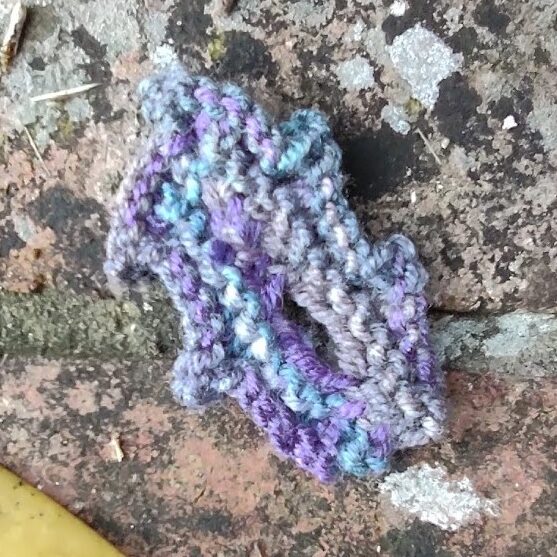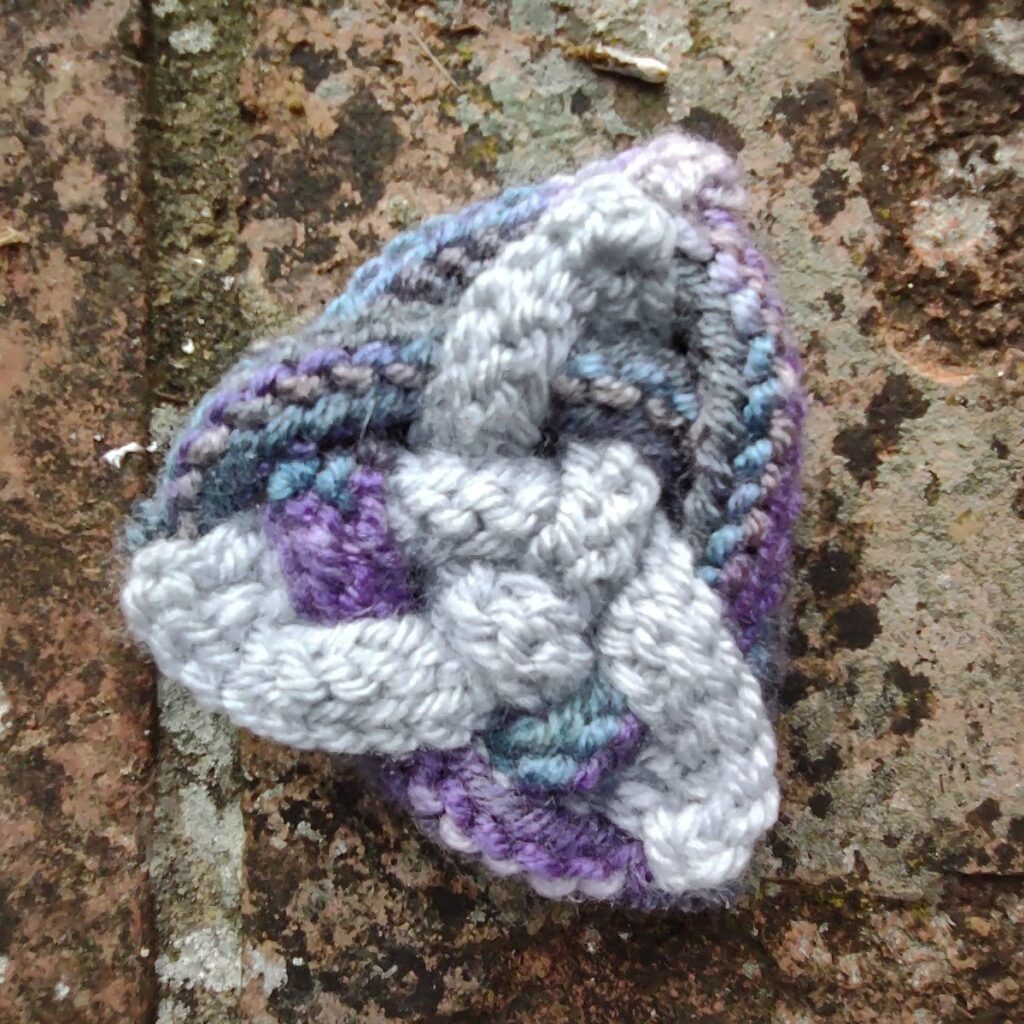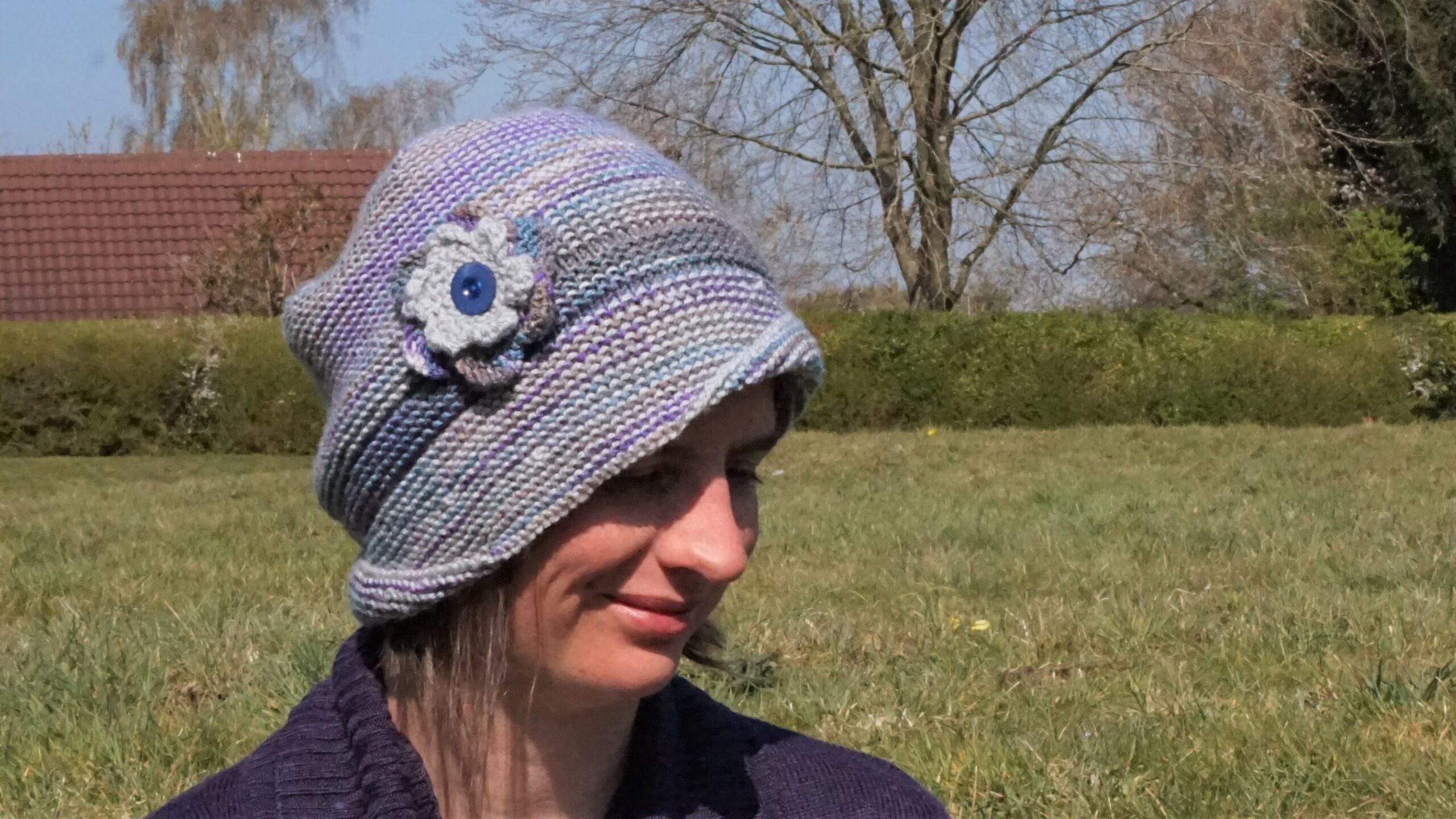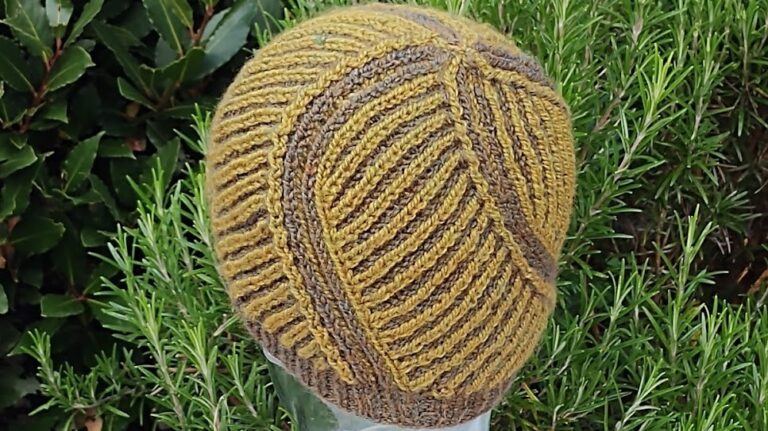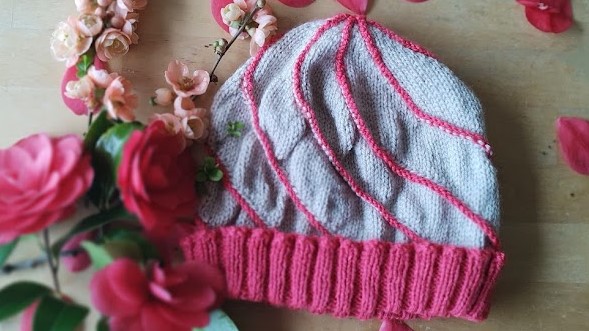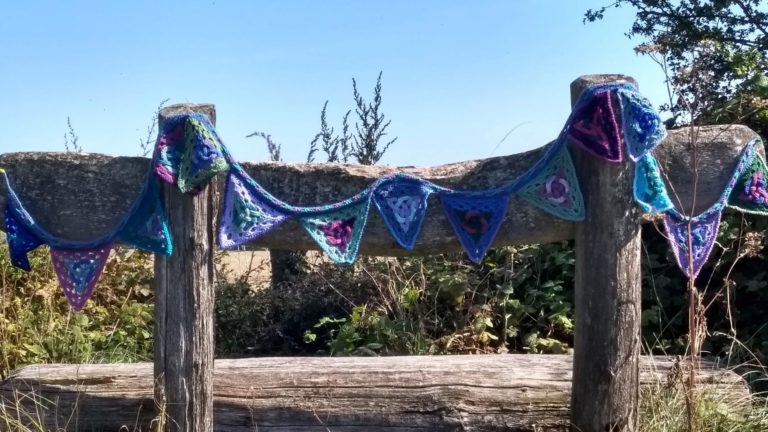Sometimes you hit a sticky point when designing when the yarn just doesn’t want to cooperate. When this happened to me on the flower for this hat, I downed tools and went to explore Flowerdown Barrows, a bronze age burial site. It’s a peaceful spot; I sat and contemplated. A whole new approach to the flower ran around my head. Once home, I swatched and immediately out popped the exact flower that I had in mind. After that, there was really only one name for this hat!
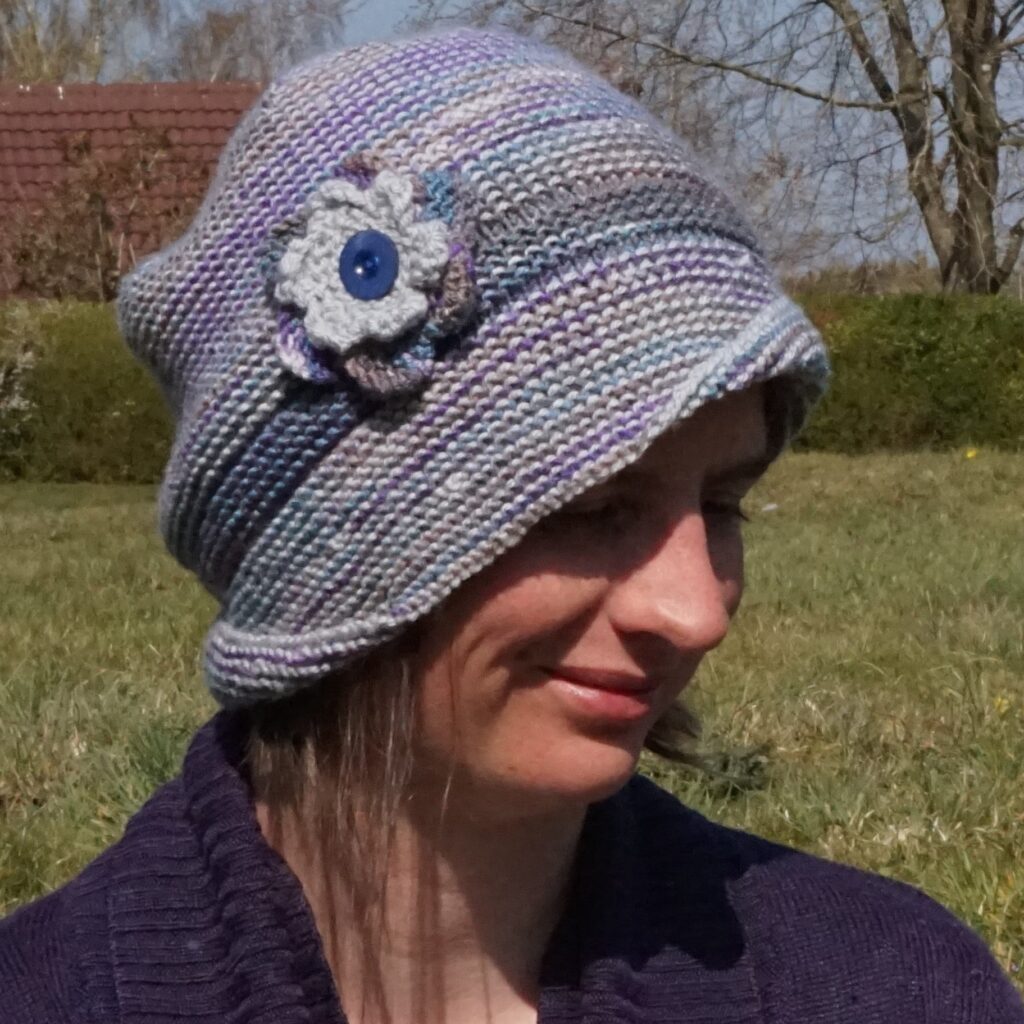
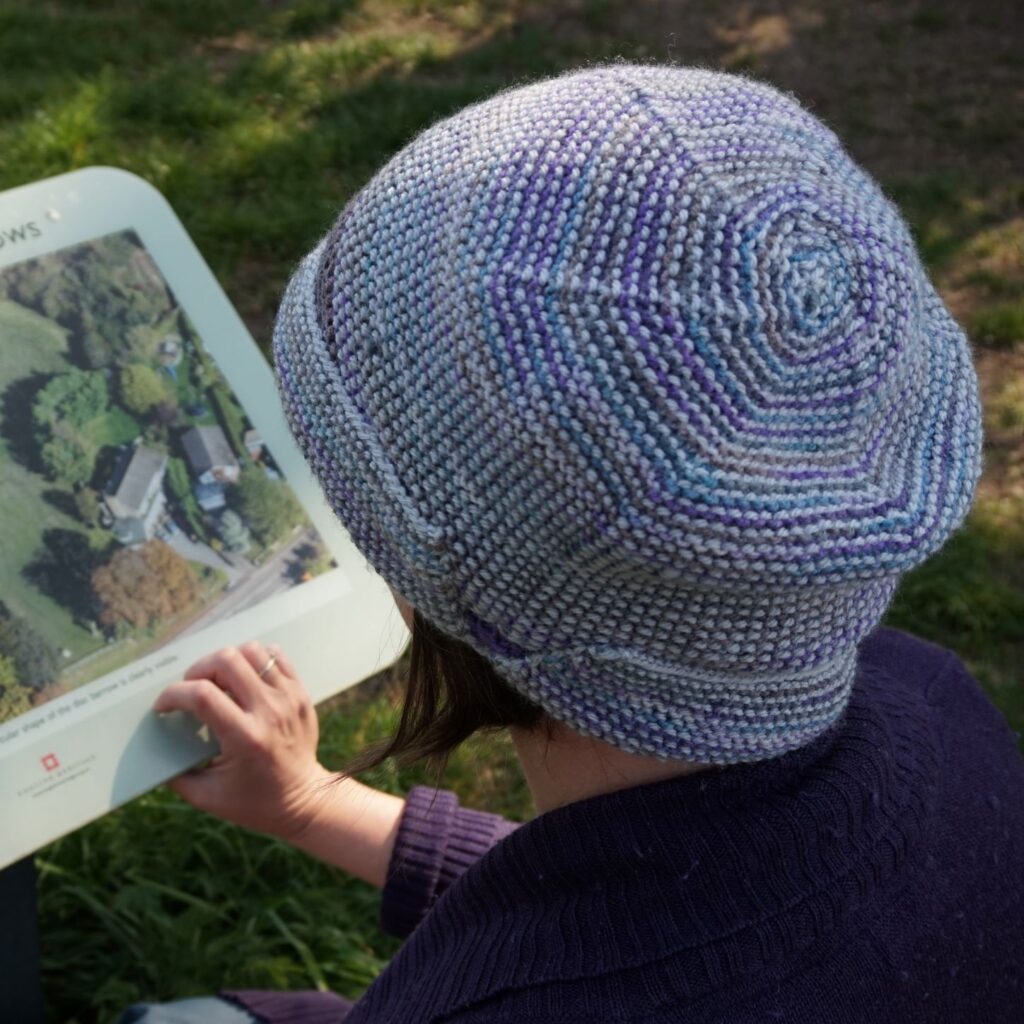
Techniques
You will need the following techniques to work this pattern. Follow the links to head over to Base Camp if you need a refresher for a particular techniques.- working in the round
- cable or knitted cast-on
- working one row stripes
- Turkish cast-on (optional)
- short rows
- increasing and decreasing
Essential Information
Measurements
Adult size (S, M, L) to fit 20[22,24] inches/ 50[55,60] cm.
Finished size 17.5[19.5,22] inches/ 44.5[49.5,56]cm
Yarn
Stylecraft Special DK (100% acrylic; 322yd/295m per 100g ball);
(A) Silver; 1[1,1] ball
Stylecraft Batik Elements (20% wool, 80% acrylic; 150yd/138m per 50g ball);
(B) Mercury; 1[2, 2] balls
Needles
1 set 4mm/US6 circular needle, 40 cm/ 15 inch
1 set 4mm/US6 double pointed needles
Notions
1 stitch marker, yarn needle, 12mm/ 0.75 inch button, waste yarn (optional).
Tension:
22 stitches/30 rounds = 10cm/ 4 inches in stocking stitch
22 stitches/40 rounds = 10cm/ 4 inches in garter stitch
Additional Notes
The slightly slouchy hat is worked from the bottom up, in garter-stitch throughout. The brim is worked in rows, before joining in the round for the body. The colours alternate each row: this is easy to achieve when working in the round, but a bit harder for the brim. This is technique is fully described in the pattern. The flower is fully removable, so can be swapped out for any other accessory you can think of as long as it has a button-hole to attach to the hat. In order for the hat to fit snuggly, there is negative ease built into the pattern. This means that the finished size is smaller than the size of head it will fit. Please take this into account when choosing which size to knit.Yarn choice
The sample shown uses two DK weight, 3-ply, mainly acrylic yarns. The pattern looks best if one yarn is a solid neutral colour, and the other variegated.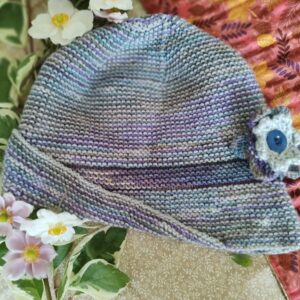
Make it your own
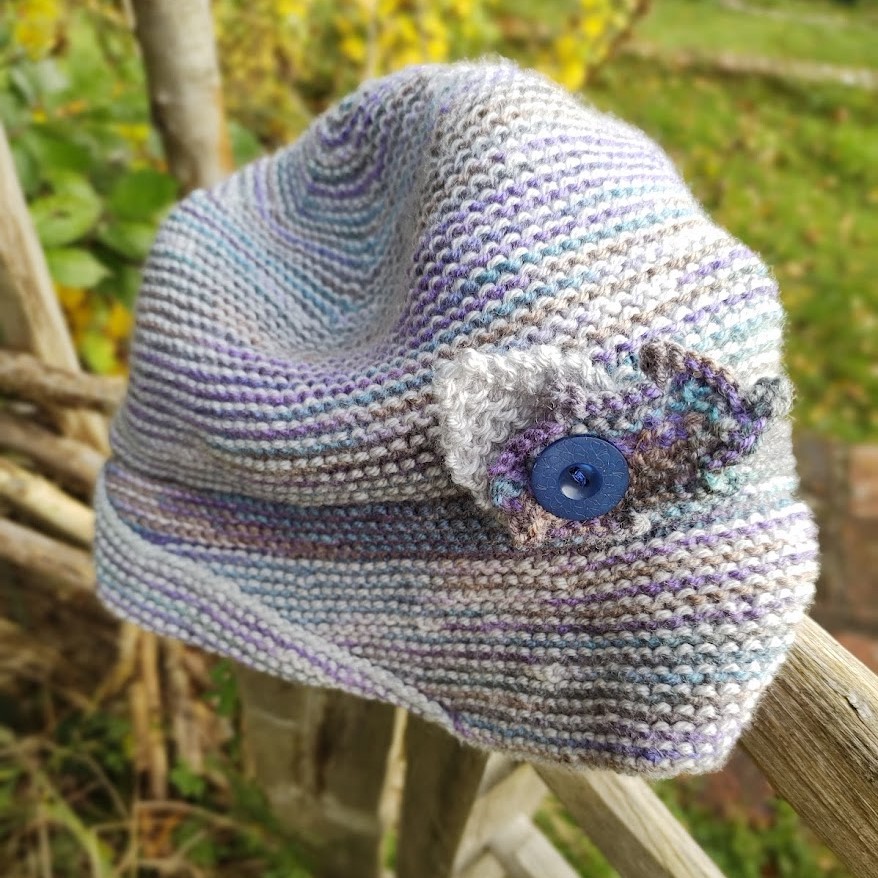
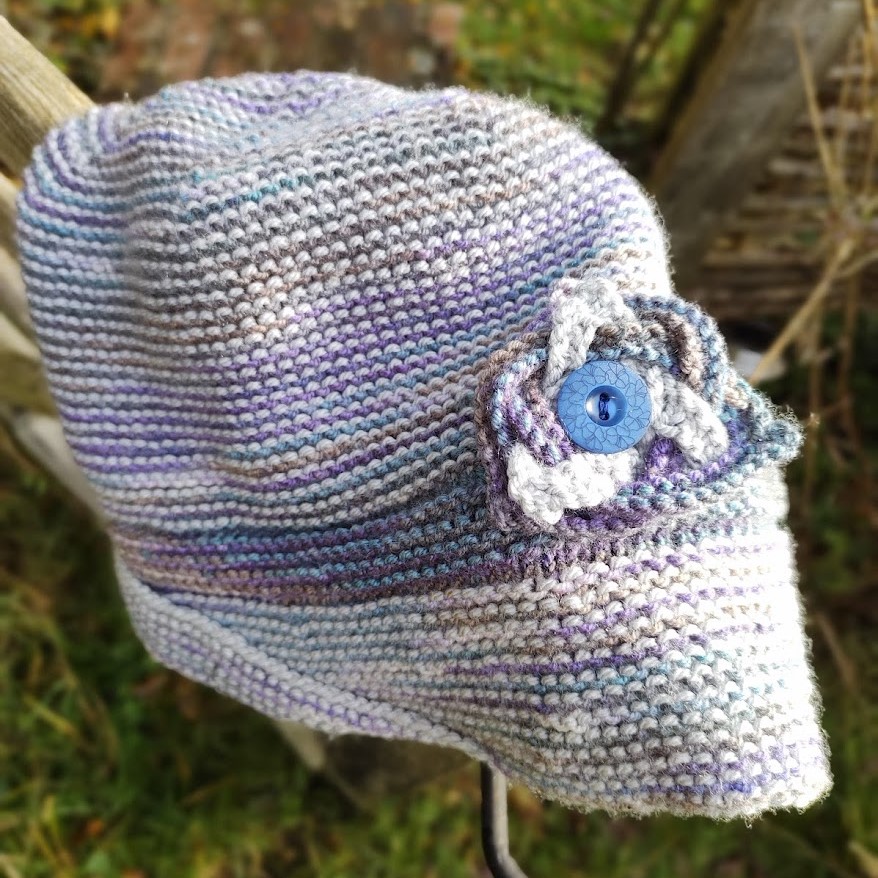
Abbreviations
cdd central double decrease – slip 2 stitches together as if to knit, k1, then pass slipped stitches over, k knit, k2tog knit 2 stitches together, k-tbl knit 1 stitch through the back loop, kyok knit, yarnover and knit into the same stitch to make 3 stitches from 1, st(s) stitch(es), WS wrong side.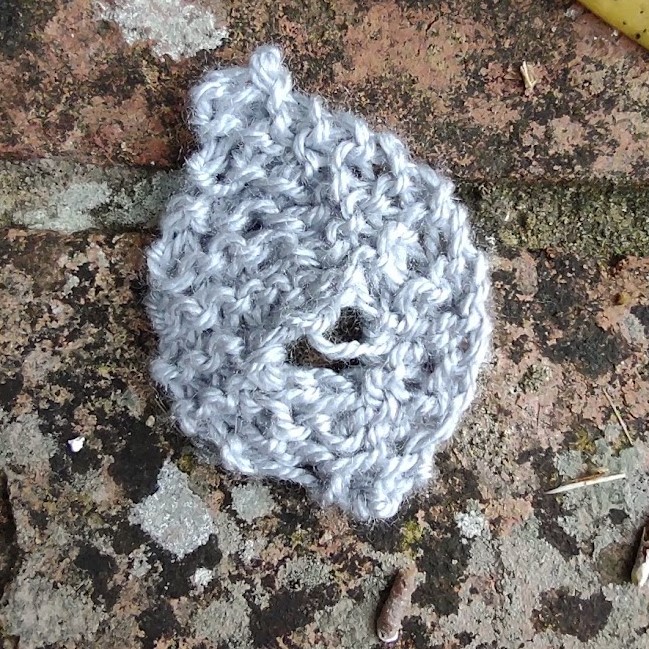
Beech leaf
Cast on 3 stitches
Rows 1: Knit.
Row 2 and every WS row: Knit.
Row 3: Kyok, k1, kyok. 7 sts
Row 5: K1, kyok, k3, kyok, k1. 11 sts
Row 7: K4, cast off 3 sts, k3. 8 sts
Row 9: K4, cast on 3 sts, k4. 11 sts
Row 11: Knit.
Row 13: K4, cdd, k4. 9 sts
Row 15: K3, cdd, k3. 7 sts
Row 17: K2, cdd, k2. 5 sts
Row 19: K1, cdd, k1. 3 sts
Row 21: Cdd. 1 st
Break yarn and fasten off stitch. Weave in ends.
Holly leaf
Cast on 27 sts.
Row 1 (RS): K2tog twice, k8, kyok, k1, kyok, k8, k2tog twice. 27 sts
Row 2 (WS): K1, k2tog, k8, k-tbl, k3, k-tbl, k8, k2tog, k1. 25 sts
Row 3: Cast off 4 sts, *slip last stitch back to holding needle, cast on 2 sts, cast off 6 sts; repeat from * to end.
Seam cast-on edge together, leaving a small part open near the bottom end of the leaf for the button hole. Weave in ends.
